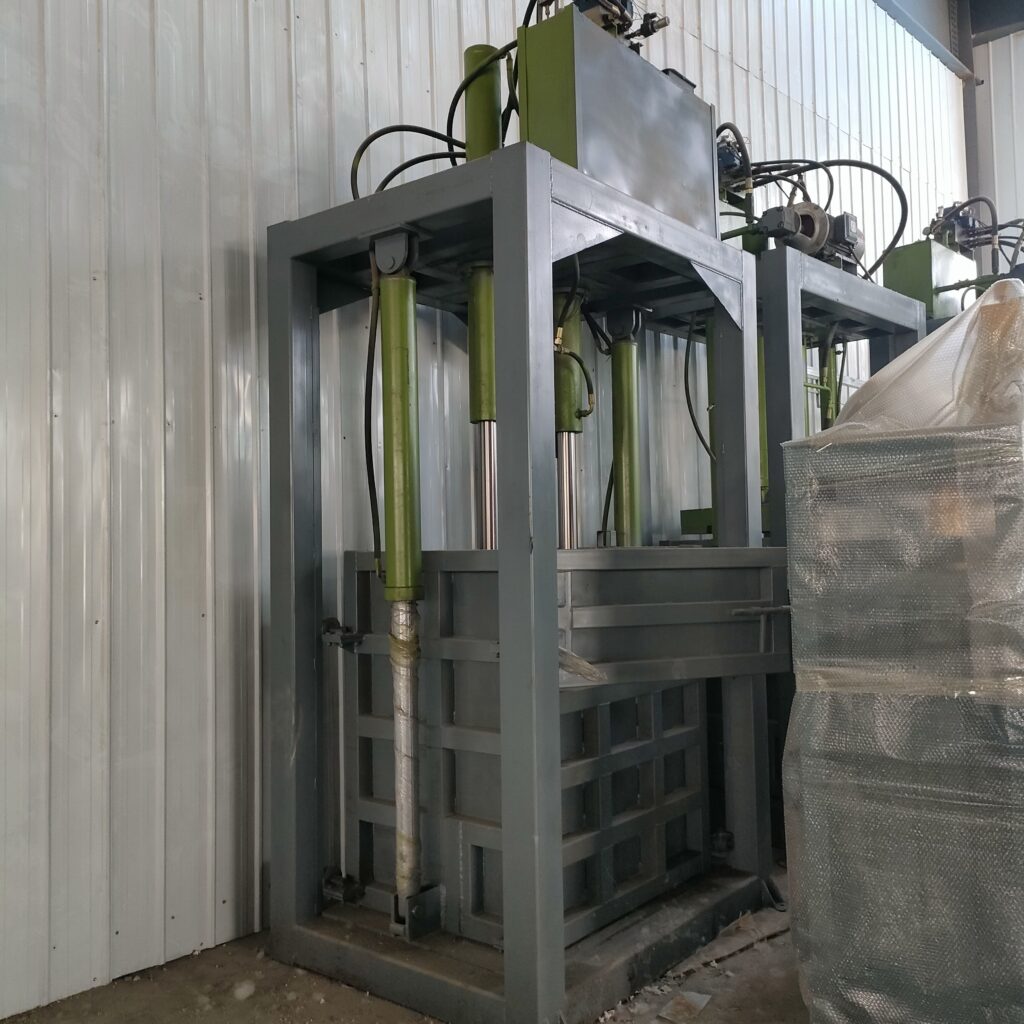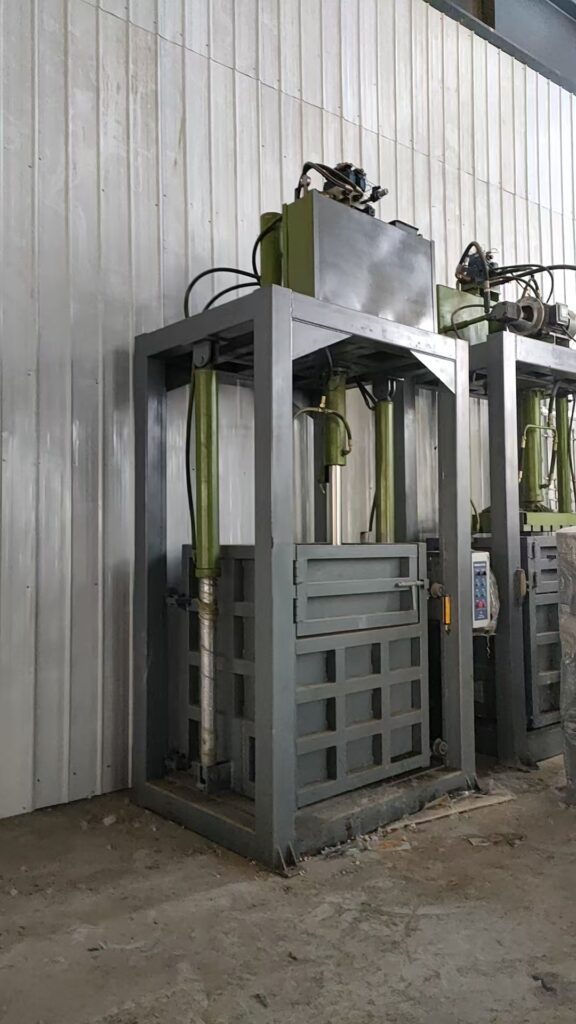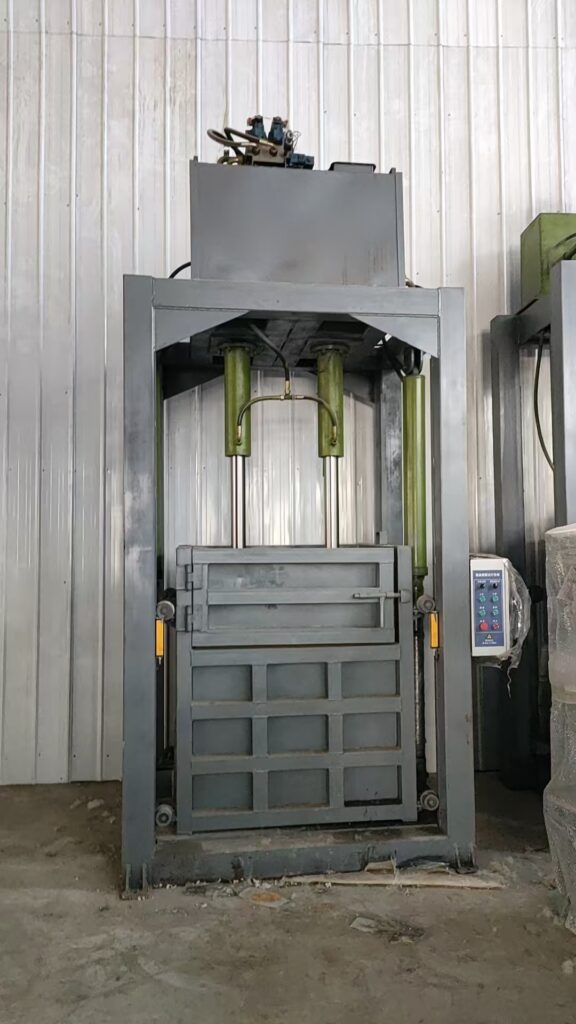What is a Clothes Baler Machine?

A clothes baler machine, also known as a textile baler or garment baler, is a hydraulic recycling machine designed to compress used clothes, textiles, rags, and similar soft materials into compact, manageable bales. These machines are widely used in textile recycling plants, second-hand clothing exporters, charities, and waste management facilities.
The working principle of a clothes baler is simple yet highly effective. With the help of hydraulic pressure, the loose and bulky textile waste is compressed into uniform blocks or bales. These bales are then tied with straps or wires for easy storage, handling, and transportation. Depending on the model, bale weights can range from 30kg up to 600kg, which means the machine can serve both small businesses and large-scale recycling companies.
Clothes balers come in different types, including:
-
Vertical balers: Compact, space-saving, and suitable for small to medium volumes of clothes.
-
Horizontal balers: Larger, more automated machines designed for high-output operations.
-
Semi-automatic or fully automatic models: Offering higher efficiency for continuous production needs.
In short, a clothes baler machine is an essential tool that helps transform scattered, space-consuming textile waste into neatly packaged, transport-ready bundles.
Why Use a Clothes Baler Machine?

The demand for textile recycling and second-hand clothing export is increasing globally. Using a clothes baler machine brings multiple benefits for businesses, the environment, and even the supply chain. Here are the key reasons why it is widely adopted:
(1) Save Storage Space
Loose clothes and textiles take up a huge amount of warehouse space. By compressing them into dense bales, storage efficiency can be improved by more than 70%. This means more products can fit into the same warehouse, reducing overhead costs.
(2) Reduce Transportation Costs
Logistics is one of the biggest expenses in the clothing recycling business. A baler minimizes the volume of goods, enabling more to fit into a single container or truck. This directly cuts shipping costs, which is especially important for companies exporting to overseas markets.
(3) Improve Work Efficiency
Manual handling of loose clothes is time-consuming and labor-intensive. A baler streamlines the process: load the material, compress, tie the bale, and unload. Workers spend less time per batch, leading to higher productivity.
(4) Increase Safety and Cleanliness
Loose piles of clothes can create an unsafe, messy working environment. Baled clothes are easy to stack and transport, reducing the risk of accidents and maintaining a cleaner workspace.
(5) Meet Market Demand
Exporters of second-hand clothes often need goods packed in uniform bale sizes (e.g., 45kg, 55kg, or 100kg). Using a baler ensures consistency in bale weight and size, making products more competitive in international trade.
(6) Eco-Friendly Solution
By recycling old textiles and clothing, businesses contribute to reducing landfill waste and promoting a circular economy. A clothes baler supports sustainable practices by making recycling more efficient.
In short, a clothes baler is not just a machine—it is a cost-saving, efficiency-boosting, and eco-friendly investment for anyone handling large volumes of textiles.
How to Use a Clothes Baler Machine?

Operating a clothes baler machine is straightforward, but proper use ensures safety, efficiency, and longevity of the equipment. Below is a step-by-step guide on how to use it:
Step 1: Preparation
-
Make sure the machine is installed on a stable, flat surface.
-
Check the hydraulic oil level and power supply connection.
-
Ensure workers wear proper protective gear, such as gloves and safety shoes.
Step 2: Loading Materials
-
Open the feeding door or chamber.
-
Place loose clothes, textiles, or fabrics evenly into the material box.
-
Avoid overfilling beyond the recommended capacity to prevent machine overload.
Step 3: Compression
-
Close the feeding door securely.
-
Start the machine by pressing the control button or switch.
-
The hydraulic system will drive the main cylinder downwards, compressing the clothes into a dense block.
Step 4: Bale Binding
-
Once compression is complete, insert baling straps, wires, or ropes into the slots provided.
-
Tie the bale tightly to ensure it does not loosen during transport.
-
Some advanced models have automatic binding systems, reducing manual work.
Step 5: Bale Ejection
-
Open the chamber door.
-
Activate the ejector system (manual lever or automatic pusher, depending on the model).
-
Safely remove the finished bale from the machine.
Step 6: Repetition
-
Repeat the process for the next batch of clothes.
-
For continuous operation, regular checks of oil, hydraulic pressure, and machine wear are recommended.
Safety Tips:
-
Never reach into the compression chamber while the machine is operating.
-
Follow the maintenance schedule to avoid breakdowns.
-
Use only trained staff for operation.
Conclusion
A clothes baler machine is a powerful solution for businesses and organizations that deal with used clothes, textiles, and fabrics. It not only reduces storage and shipping costs but also improves operational efficiency and supports sustainable recycling practices.
By understanding what a clothes baler machine is, why it is important, and how to use it properly, you can maximize the value of your recycling business and contribute to a greener future.
Whether you run a small thrift shop, a textile recycling center, or an international clothing export business, investing in the right clothes baler machine can transform your operations and give you a significant competitive edge.
